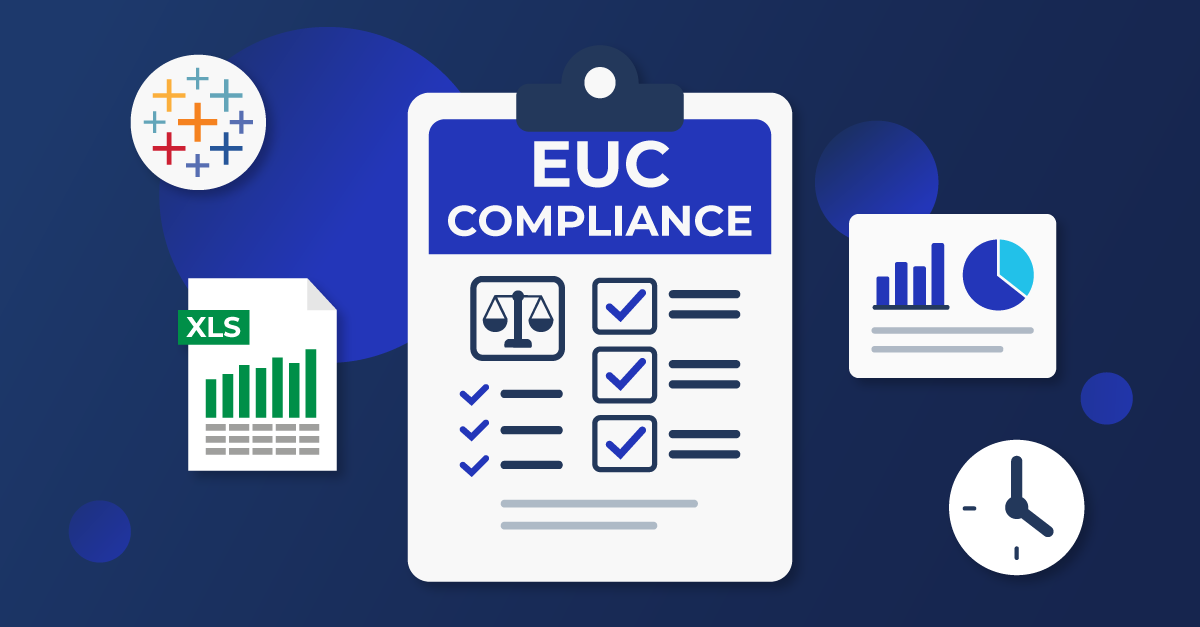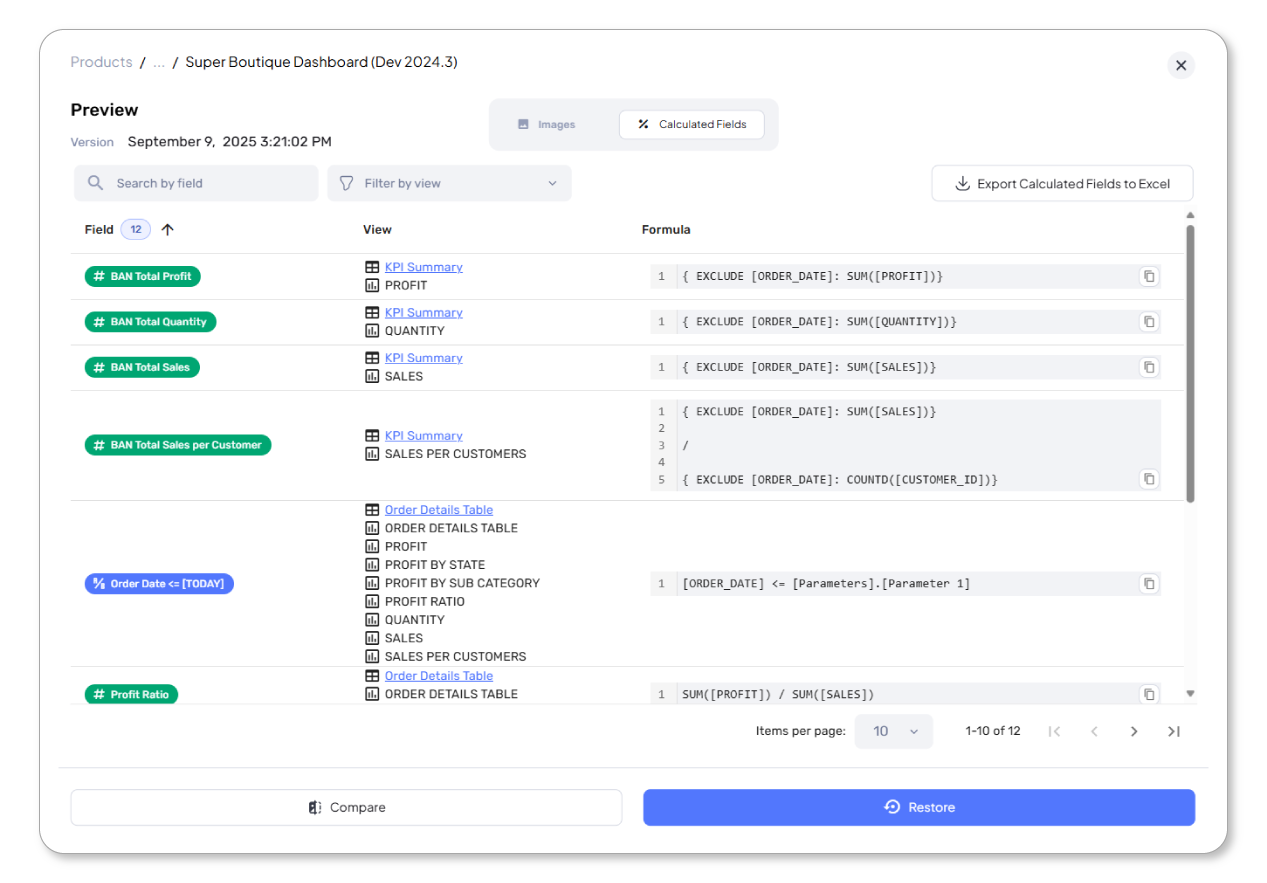How Wiiisdom Simplifies EUC Compliance Through Tableau Version Management

What Is EUC Compliance and Why Does It Matter?
Today, data-driven organizations have constant pressure to meet regulatory compliance while maintaining agility in their data analytics. For those subject to the SOX regulation, they also must be compliant with End User Computing (EUC) standards. EUC compliance refers to any analytical asset, be it a dashboard, spreadsheet, or model, that is used to support decision-making or regulatory reporting. These EUCs must be documented, validated, and reviewed regularly, and include owner and change log documentation, data source lineage, and detailed calculation logic. These assets are often created and maintained outside of a formal governance process, making them vulnerable to errors, inconsistencies, and compliance risks.
Understanding EUC Compliance In Practice
The goal for many organizations subject to the EUC regulation is to automate the documentation and validation processes as much as possible, if not eliminate all manual actions, because the burden of doing it that way can be overwhelming.
Let’s take an example that maybe your organization is facing: For EUC compliance, you’re required to fill out an Excel template for each Tableau dashboard. This includes owner information, a change log detailing what was modified and when, and a separate tab outlining all data sources, where they come from, how they’re maintained, and every calculation used in the dashboard. Crucially, any deviation from the original database must be documented. If a field is displayed exactly as it exists in the source, you’re in the clear. However, if you apply any transformation, it must also be logged. For each calculation, you must write out the name and the full logic behind it. This documentation is then reviewed at least annually, and sometimes more frequently if major changes occur, triggering off-cycle validations. The most time-consuming part? Manually keying in the calculation logic one by one. It’s a tedious process that slows down updates and discourages teams from keeping dashboards fresh.
That’s why solutions like Wiiisdom are so valuable; we now provide the ability to automatically extract calculation logic from any version of a Tableau workbook and export it to Excel, streamlining the entire EUC documentation process.
Wiiisdom’s New Capabilities: Calculation Extraction, Documentation, and Comparison
Within our Tableau Version Management solution, we have now released 3 new functionalities:
- Extraction of calculations for any version of a workbook (including calculated fields that have been created but are not used anywhere).
- The ability to document the extraction offline in Excel.
- Every time a new workbook is created and a new version is created, we extract this information so you can compare over time the changes in calculated fields. For example, the previous version worked flawlessly, but the latest one introduces an error. What changed?
These capabilities are a game-changer for EUC compliance. It means no more manually typing out logics, no more fragmented documentation, and no more guesswork during audits. It allows users to download their list of calculations in a meaningful way and in a format they’re comfortable with.

A preview in the Wiiisdom Cloud Platform of documenting calculated fields of a Tableau Workbook, with the option of downloading this view in Excel.
The benefits of these capabilities are immediate and tangible:
- Efficiency: Reduces manual effort across hundreds of workbooks.
- Accuracy: Ensures consistent documentation of logic across versions.
- Auditability: Supports both internal validation and external audit requirements.
- Governance: Encourages teams to keep dashboards fresh and relevant, knowing updates won’t trigger a documentation headache.
What’s Next
Our new Tableau Version Management capabilities mark a significant step forward in EUC compliance. Automating the extraction and documentation of calculation logics empowers teams to focus on insights, not manual tasks. The critical takeaway here is that Data Governance is no longer enough because any deviation from the database, no matter how small, introduces risk. That’s why organizations need Analytics Governance alongside Data Governance to confidently track, validate, and audit any analytical change, ensuring compliance, transparency, and trust.
If you want to see these functionalities in action, get in touch with us.

